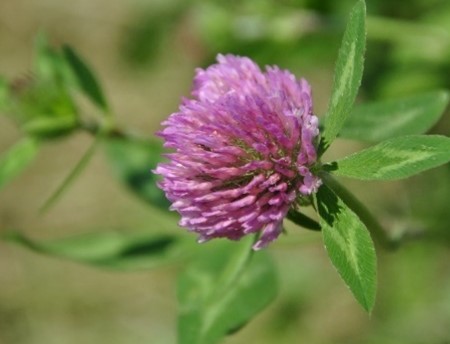Disease resistance in a worldwide red clover germplasm collection
High variability for and candidate loci associated with resistance to southern anthracnose and clover rot in a worldwide collection of red clover provide the basis for genomics-assisted breeding.

Red clover (Trifolium pratense L.) is one of the most important forage legumes in temperate climates, grown throughout Europe and North America. Red clover is an outcrossing crop with a high degree of self-incompatibility and consequently a high intra-population genetic variability. Main breeding objectives are yield, quality, persistence, and disease resistance. Key fungal pathogens threatening European red clover production and leading to severe yield losses are Colletotrichum trifolii Bain & Essary, causing southern anthracnose, and Sclerotinia trifoliorum Erikks, causing clover rot.
From a comprehensive red clover germplasm collection, 397 accessions of four different types (landraces, ecotypes, breeding material and cultivars) and from 23 different countries were grown in the greenhouse. Spray inoculation trials were performed to examine resistance for the two pertinent diseases. Most of the accessions were highly susceptible to southern anthracnose. The variation between accessions was high with some outstanding breeding material from Switzerland and from the Czech Republic as well as some American cultivars. For clover rot, the average resistance was higher as for southern anthracnose resistance but phenotypic variation among the accessions was small.
Using a genotyping-by-sequencing approach with 200 pooled plants per accession and genome-wide association analysis, we found one quantitative trait locus on chromosome 1 that explained 16% of the variation for southern anthracnose resistance. For clover rot resistance, multiple QTL explaining up to 12% of the total phenotypic variation were identified. The QTL and the underlying candidate genes reported in this study provide valuable resources for the development of genomics-assisted selection strategies, another important step forward to increase the efficiency in breeding for disease resistance in red clover.
This research was conducted in the frame of the Horizon 2020 project EUCLEG (Breeding forage and grain legumes to increase EU’s and China’s protein self-sufficiency; external page www.eucleg.eu) and represents a successful collaboration between 38 institutions from the public and the private sector. EUCLEG was supported by the EU’s Horizon 2020 Programme for Research & Innovation (Grant agreement no. 727312; EUCLEG).
Citation:
Frey LA, Vleugels T, Ruttink T, et al (2022) Phenotypic variation and quantitative trait loci for resistance to southern anthracnose and clover rot in red clover. Theor Appl Genet.
external page https://doi.org/10.1007/s00122-022-04223-8